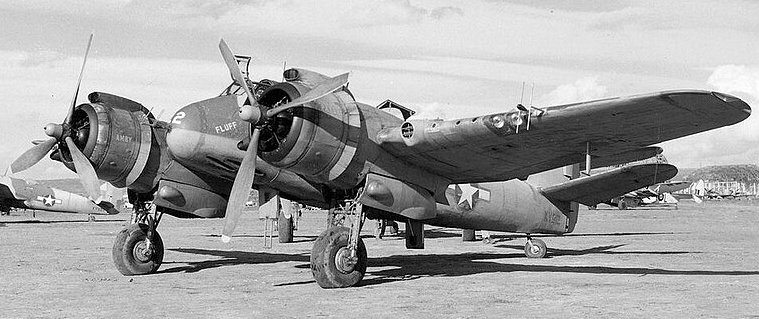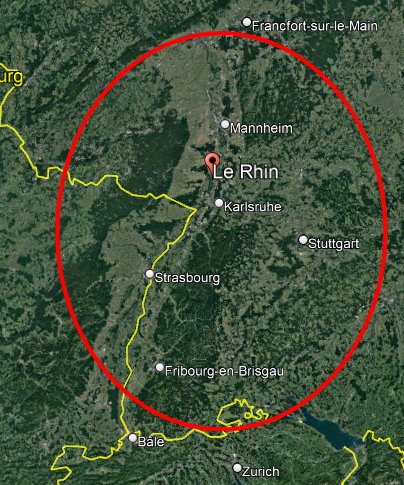ACUFO-00-00-RHINEVALLEY-1
On June 29, 1947, the newspaper Seattle Daily Times published an article about US pilots who remembered phenomena they saw during World War II.
Harre Cowe, 12538 15th Ave. N. E., Seattle, told that 23 night fighter crews in a squadron to which he was attached reported seeing strange lights while flying over the Rhine Valley:
“The first crew to see them noticed that the lights seemed to be flying right with the airplane. The boys didn't know what they were, and tried evasive action, but the lights seemed to stay right with them.”
“The boys were afraid they'd be grounded if they reported the lights, so they kept still about them. But the following night another crew saw the same thing and reported it. After that, all the crews in the squadron with the exception of two had the same experience.”
“Finally, one of the boys decided to shoot at one of the lights to see what would happen, and he blasted away. There was an explosion that rocked the plane and bent the plexiglass dome on it.”
“Nobody ever did offer any explanation for the lights, which the boys called foo fighters. We just set it down as something that the Germans were trying out and let it go at that.”
| Date: | 1944 |
|---|---|
| Time: | Probable night. |
| Duration: | ? |
| First known report date: | 1947 |
| Reporting delay: | 3 years. |
| Country: | France or Germany |
|---|---|
| State/Department: | |
| City or place: | The Rhine valley. |
| Number of alleged witnesses: | 1 to 3 |
|---|---|
| Number of known witnesses: | ? |
| Number of named witnesses: | 0 |
| Reporting channel: | Colleague of witness in newspaper. |
|---|---|
| Visibility conditions: | Night. |
| UFO observed: | Yes. |
| UFO arrival observed: | ? |
| UFO departure observed: | ? |
| UFO action: | ? |
| Witnesses action: | Fires, results in rocking the plane and damaging the plexiglas dome. |
| Photographs: | No. |
| Sketch(s) by witness(es): | No. |
| Sketch(es) approved by witness(es): | No. |
| Witness(es) feelings: | ? |
| Witnesses interpretation: | Probable German device. |
| Sensors: |
[X] Visual: 1 to 3
[ ] Airborne radar: [ ] Directional ground radar: [ ] Height finder ground radar: [ ] Photo: [ ] Film/video: [ ] EM Effects: [ ] Failures: [X] Damages: Yes. |
|---|---|
| Hynek: | LN |
| Armed / unarmed: | Armed, machine guns and 20 mm cannon. |
| Reliability 1-3: | 2 |
| Strangeness 1-3: | 2 |
| ACUFO: | Insufficient information. |
[Ref. prt1:] JAN ALDRICH - "PROJECT 1947":
Seattle, Wa. Seattle Daily Times - 29 June, 1947
Harre Cowe, 12538 15th Ave. N. E., recalled today that flying lights were among the unexplained mysteries of air fighting in Europe during the Second World War.
Cowe said 23 night-fighter crews in a squadron to which he was attached reported seeing the strange lights while flying over the Rhine Valley.
Lights Kept Up
“The first crew to see them noticed that the lights seemed to be flying right with the airplane,” Cowe said. “The boys didn't know what they were, and tried evasive action, but the lights seemed to stay right with them.
”The boys were afraid they'd be grounded if they reported the lights, so they kept still about them. But the following night another crew saw the same thing and reported it. After that, all the crews in the squadron with the exception of two had the same experience.
“Finally, one of the boys decided to shoot at one of the lights to see what would happen, and he blasted away. There was an explosion that rocked the plane and bent the plexiglass dome on it.
“Nobody ever did offer any explanation for the lights, which the boys called “foo fighters”. We just set it down as something that the Germans were trying out and let it go at that.”
PROJECT 1947 Comment: The headline on the Seattle Times news item did not mention “Foo Fighters”, this is a Project 1947 header. This news story is one of several personal accounts from WW II in which the claim is made that UFOs were fired upon. These personal accounts are supported by official documents for the same period which state that “foo-fighters” or “balls of fire” were fired upon.
[Ref. fjh1:] FRANK JOSEPH:
“The boys were afraid they'd be grounded if they reported the lights, so they kept still about them,” Harre Cowe, a USAAF fighter pilot stationed in France on November 8, 1944, recalled three years later for an interview with the Seattle Daily Times. “But the following night, another crew saw the same thing, and reported it. After that, all the crews in the squadron, with the exception of two, had the same experience.”
Night fighter crews in the squadron to which Cowe was attached reported seeing the strange lights while flying over the Rhine Valley. So many sightings and their repeated commonalities constitute powerful proof of the reality of the phenomenon. Skeptics may deprecate the value of such observations, but they forget that eyewitness testimony, particularly if it is consistent and offered by persons unknown to each other, is admissible in a court of law as corroborative evidence.
Cowe went on to describe something more than a sighting his squadron experienced: “The first crew to see them noticed that the lights seemed to be flying right with the airplane (a Northrop P-61 Black Widow night fighter). The boys didn't know what they were, and tried evasive action, but the lights seemed to stay right with them. Finally, one of the boys decided to shoot at one of the lights to see what would happen, and he blasted away (with four 20-millimeter Hispano cannons, plus another quartet of 50-caliber Browning machine guns firing from an upper turret). There was an explosion that rocked the plane and bent the Plexiglas dome on it.”
The Bristol Type 156 “Beaufighter”, nicknamed “Beau”, was a British multi-role aircraft developed during WWI. It was originally conceived as a heavy fighter variant of the Bristol Beaufort torpedo bomber; it proved to be an effective night fighter, which came into service with the Royal Air Force (RAF) during the Battle of Britain.
Originally, armament consisted of four 20mm cannons and six 0.303-in machine-guns but many variants were built; for example, versions had the ability to additionally carry eight rocket projectiles, some had a Vickers “K” gun, Beaufighter TF.Mk X was used for anti-shipping operations.
The Beaufighter Mk VIF was fitted with the Mark VIII radar.
Below: Beaufighter Mk VIF of the 415th Night Fighter Squadron.

|
The Beaufighters served with the U.S. Army Air Forces until the end of the war, but most were replaced by the P-61 “Black Widow” beginning in December 1944.

|
The 415th Night Fighter Squadron was a US night fighter unit formed in February 1943, which flew missions in the Mediterranean Theater of Operations and then in Northwest Europe during World War II. Unfortunately, I did not find a specific mention of a Harre Cowe in the personnel of this unit. However, the available archives are meager, and they may not contain all individual names.
Harre Cowe tells us of an instance in which a night fighter from the 415th Night Fighter Squadron opened fire on a “Foo-fighter”, “to see what would happen”, and it exploded hard enough to shake the plane and fold the plexiglass dome.
Unfortunately nothing more is known, and no official document about this incident has surfaced, at least for the moment.
Insufficient information.
* = Source is available to me.
? = Source I am told about but could not get so far. Help needed.
| Main author: | Patrick Gross |
|---|---|
| Contributors: | None |
| Reviewers: | None |
| Editor: | Patrick Gross |
| Version: | Create/changed by: | Date: | Description: |
|---|---|---|---|
| 0.1 | Patrick Gross | April 13, 2024 | Creation, [prt1], [fjh1]. |
| 1.0 | Patrick Gross | April 13, 2024 | First published. |